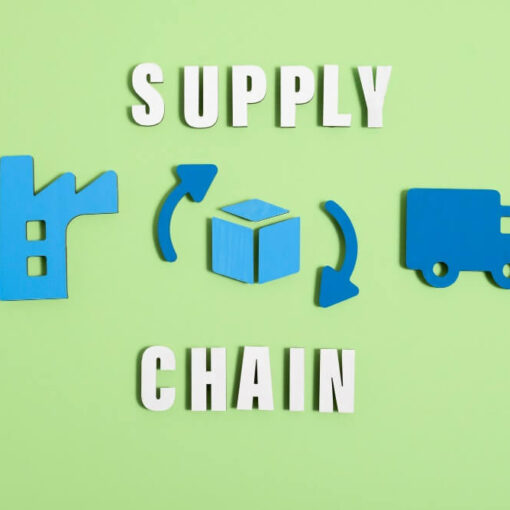Have you ever thought about how getting a loan today is so different from just a decade ago? Gone are the days when applying for a loan meant dealing with stacks of paperwork, long waits, and endless trips to the bank. Now, you can apply for a loan from the comfort of your own couch using just your smartphone. But how did we get to this point?
The lending industry has changed dramatically in the past ten years. With the rise of online applications and the use of artificial intelligence to check creditworthiness, the way we borrow money has transformed in ways we never imagined. These changes are not just about convenience; they are reshaping who can access loans, how quickly decisions are made, and even the types of loans available. Prepare to be amazed by the incredible shifts in the lending world, driven by technology and changing consumer behaviors shaping the future of borrowing!
What is a Lending Industry?
The lending industry, also known as the credit industry, is a vital sector of the financial services industry that involves the borrowing and lending of money. It plays a crucial role in the global financial system and is a significant driver of economic growth. The lending industry encompasses various types of lending, including personal loans, business loans, mortgage loans, and more.
In essence, the lending industry provides individuals and businesses with access to funds for various purposes, such as purchasing a home, starting or expanding a business, or managing personal expenses. By facilitating the flow of capital, the lending industry helps stimulate economic activity and improve financial stability.
How Does the Lending Industry Work?
The lending industry functions through a systematic process where financial institutions, known as lenders, provide funds to borrowers in exchange for an agreement to repay the borrowed amount with interest. Here’s a simplified overview:

- Application: Borrowers begin by submitting a loan application to a lender, which requires personal information, financial history, and the loan purpose.
- Assessment of Creditworthiness: Lenders evaluate the borrower’s ability to repay by reviewing their credit score, income, employment status, and debt-to-income ratio.
- Loan Approval: If deemed creditworthy, the lender approves the loan and shares the terms, including the interest rate and repayment schedule.
- Funding: After the borrower accepts the terms, the lender disburses the funds, either as a lump sum or in installments.
- Repayment: The borrower repays the loan according to the agreed schedule, typically including both principal and interest. Failure to repay may lead to the lender taking recovery actions.
- Digital Transformation: The industry is increasingly adopting digital lending, allowing applications, approvals, and fund disbursements to occur online, making the process more efficient and accessible for borrowers.
Major Trends Shaping the Lending Industry in the Past Decade
Digital Transformation in Lending
The lending industry has experienced a remarkable transformation in recent years, primarily driven by the rise of digital lending. This shift allows borrowers to access loans online, moving away from traditional in-person methods that have long dominated the market. With the increasing use of smartphones and computers, borrowers can now complete loan applications quickly and conveniently from anywhere. This change has not only sped up the approval process but also broadened access to credit, allowing more individuals and businesses to secure the funds they need.
Digital lending is expected to reshape the financial industry significantly, with projections indicating that it could reach a value of billions of dollars by 2024. The convenience of online platforms is making it easier for consumers to compare loan options and find terms that suit their financial situations. This accessibility has opened doors for those who may have previously struggled to secure loans through traditional channels.
AI and Data-Driven Lending
Another crucial factor in the evolution of the lending industry is the integration of artificial intelligence (AI) and big data. Traditionally, credit scores were the primary factor in determining loan eligibility. However, lenders today are increasingly leveraging AI to analyze a broader array of data. It includes not just credit scores but also spending habits, income patterns, and other financial behaviors.
By utilizing advanced algorithms and machine learning, lenders can make more informed lending decisions. This data-driven approach allows them to assess risk more accurately, which has led to increased access to loans, particularly for individuals with limited credit histories or those who may have been overlooked by traditional lending methods. As a result, more people are gaining the opportunity to secure financing that can help them achieve their personal and business goals.
Personalized Loan Products

In response to the changing landscape of borrowing, financial institutions are placing a stronger emphasis on delivering hyper-personalized experiences. Today’s borrowers expect loan products tailored to their specific needs, whether for personal use, home purchases, or business expansion.
This shift towards customization enhances customer satisfaction as lenders strive to provide offers that align with individual financial situations. By understanding the unique needs of their customers, lenders can build stronger relationships and foster loyalty, ultimately attracting and retaining clients in a competitive market.
Regulatory Changes and Compliance
The lending industry also faced significant regulatory changes following the 2008 financial crisis. Stricter regulations were implemented to protect consumers from unfair practices and predatory lending. Laws like the Dodd-Frank Act and the establishment of the Consumer Financial Protection Bureau (CFPB) were designed to ensure responsible lending practices.
As fintech companies have emerged and technology continues to evolve, the regulatory landscape must adapt accordingly. Policymakers face the challenge of balancing innovation with the need for consumer protection, ensuring that new lending models operate within a framework that prioritizes fairness and transparency.
Blockchain and Decentralized Finance (DeFi)

The advent of blockchain technology has introduced a new dimension to the lending industry through decentralized finance (DeFi). This innovative approach allows borrowers and lenders to interact directly without the need for traditional intermediaries like banks. DeFi platforms facilitate peer-to-peer lending through smart contracts, which are self-executing contracts with the terms of the agreement directly written into code.
This shift not only enhances transparency but also reduces costs associated with borrowing and lending. By eliminating middlemen, DeFi creates a more inclusive environment, where individuals can access loans more easily and on better terms.
Focus on Financial Inclusion
Improving financial inclusion has become a priority within the lending industry. Innovative credit scoring models and mobile banking services are making it easier for underserved populations to access loans. In many developing regions, mobile banking has emerged as a critical solution, enabling individuals to seek small loans for entrepreneurial endeavors or personal needs.
By addressing the barriers to access, the lending industry is empowering more people to participate in the financial system, fostering economic growth and stability in communities that have historically faced challenges in securing credit.
Impact of COVID-19 on the Lending Industry

The COVID-19 pandemic significantly accelerated the trend toward digital lending. With social distancing measures in place, many traditional lenders were forced to adopt online platforms to meet customer needs. Fintech companies that were already well-versed in digital processes, saw a surge in demand as consumers sought quick access to funds during uncertain times.
In response to the economic challenges posed by the pandemic, governments around the world implemented various relief measures, including loan deferrals and emergency small business loans. These initiatives aimed to support borrowers navigating financial hardships, highlighting the importance of adaptability in the lending industry.
Conclusion
The lending industry has undergone a remarkable transformation in the past decade, driven by technological advancements and changing consumer expectations. Today, borrowers can easily access loans online, eliminating the lengthy processes of the past. With innovations like artificial intelligence and blockchain technology, lending is becoming more personalized and efficient, allowing lenders to assess risk and meet diverse consumer needs more effectively.
Looking ahead, the focus on financial inclusion will remain crucial. As lenders adapt to new digital platforms and prioritize transparency, the industry can empower underserved populations and foster economic growth. By embracing these changes, the lending sector has the potential to create a more equitable and accessible financial landscape for all, ensuring that everyone can participate in the economy and achieve their financial goals.





